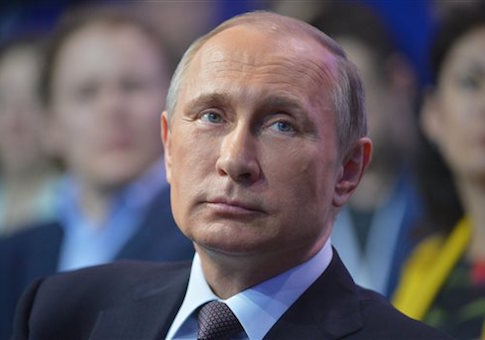Fearing the collapse of the Russian financial system and burdensome Western sanctions in the aftermath of the Ukraine crisis, investors and businesses moved more than $32.6 billion in assets outside of Russia, primarily to offshore accounts, in the first quarter of 2015, according to reports.
That figure represents a drop from the $47 billion in Russian capital flight recorded during the first quarter of 2014, according to an analysis released by the Russian Central Bank.
The Central Bank also revised its 2014 figure for net capital flight to $154, and now projects capital flight of at least $130 billion by the end of 2015.
For the Russian government these figures illustrate the financial pain caused by sanctions imposed by the United States and European Union. Those actions triggered a sharp decline in the ruble’s purchasing power and a sharp rise in inflation, which has reached 17 percent annually.
Capital flight has several negative effects on the Russian economy, including the loss of tax revenue and the reduction in funding available for investment.
Russia’s economy for decades has been dependent on energy production and overseas sales and remains poorly diversified.
Lack of investment funding also delays attempts to modernize the economy. The Center for Macroeconomic Analysis and short-term forecasts assesses that investment activity is down 20 percent since 2013.
Finally, reduced investment is triggering a rash of bankruptcies, spreading across the transport, housing, trade, and power industry sectors, adding to the unemployment rate.
Russian Economic Development Minister Alexei Ulyukayev recently claimed that investments could rise by 3 percent in 2016.
These grim financial statistics have done little to halt a Russian effort to take on the U.S. dollar’s role as the globe’s reserve currency and as the currency of preference for transactions in oil and gas.
The Russian government announced on May 1 the authorization of a reserve fund for the BRICS, the large and non-Western economies of Brazil, Russia, India, China and South Africa.
Those nations constitute 40 percent of the world’s population and 20 percent of global GDP.
The fund would serve as a spur to enhanced cooperation among BRICS members and shield them against short-term liquidity pressures. Current plans call for Russia to contribute $18 billion toward the $100 billion dollar fund with China contributing an additional $41 billion.
Even more ambitious is Putin’s plan to set up an international bank in Shanghai. Named the New Development Bank, BRICS members will be able to receive funding for infrastructure projects
The New Development Bank joins the recently announced Asia Infrastructure Investment Bank, led by China, in which Russia also will be a prominent member, as a future rival for the World Bank and International Monetary Fund (IMF).
